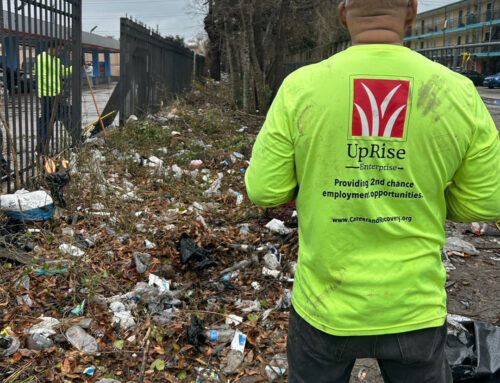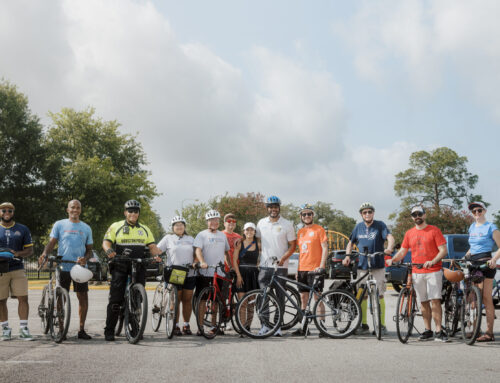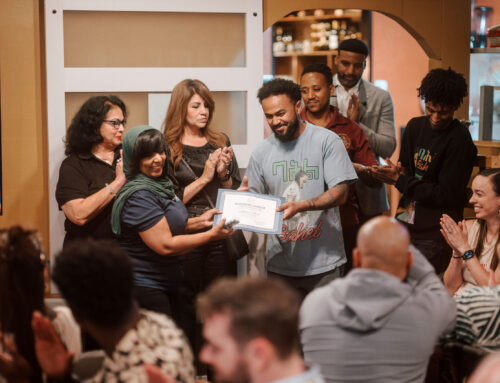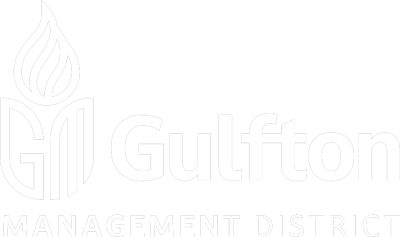
González
Greener Gulfton is a coalition seeking to bring more greenspace and vegetation to Gulfton Area Management District to improve public health, commerce, visual appeal and much more for the neighborhood. Jaime González, Houston Healthy Cities director for The Nature Conservancy in Texas, is a key figure in the coalition. He shared his thoughts about the plan with the District.
Q: What is Greener Gulfton, and how did the initiative come about?
A: Greener Gulfton is a community-engaged plan to bring more nature to Gulfton to support human health and well-being, climate resilience, and wildlife conservation and appreciation. The plan was spurred by the 2017 Gulfton Complete Communities Plan’s call for more greenspace and the 2020 Houston-Harris County Heat Watch Campaign, which identified Gulfton as Harris County’s physically hottest neighborhood.
It was also a response to the City of Houston’s Climate Action Plan, Resilience Houston Strategy, and Houston Cities Connecting Children to Nature Plan. All of these initiatives support a unified goal to increase the development of and access to nature in communities that need and deserve both.
Q: What are some of the elements of the plan?
A: The Greener Gulfton plan was released to the public at Gulfton’s National Night Out celebration in Burnett-Bayland Park in October 2021. You can read the plan in English here and the community summary en Espanol here.
It calls for seven major neighborhood interventions, including master planning and redevelopment of Burnett-Bayland Park, the creation of “cool corridors” using tree plantings and trellises for more narrow transit ways, and environmentally friendly stormwater solutions in the southeastern portion of the neighborhood (which experiences regular street-level flooding).
Importantly, interventions will be designed to simultaneously uplift the health of both human residents and indigenous wildlife – in other words, all of the residents of Gulfton. If we are successful in this effort, in addition to being better protected by nature, Gulfton residents of all ages will be better able to experience the joy and wonder of nature such as seeing butterflies and hearing choruses of birds.
 Q: When will the work begin to improve the Gulfton community? Will it be in phases, and if so, what are the priorities?
Q: When will the work begin to improve the Gulfton community? Will it be in phases, and if so, what are the priorities?
A: The work will occur in phases as community support, financial support, and redevelopment allow. Some projects will be actionable in the short term of the next two years and some, such as tree plantings, will likely begin this year and continue to be implemented over a longer time frame. The Greener Gulfton team will also be working with LINKHouston and the Houston Area Research Center in 2023-2024 to innovate green bus stops – natural oases of green space for folks reliant on public transit.
Q: A 2020 Heat Watch report found that Gulfton is among Houston’s hottest neighborhoods and lacks vegetation to keep the community cooler. How will Greener Gulfton address these concerns?
A: That’s true. The Heat Watch Campaign identified Gulfton as a full 17 degrees hotter in August than the coolest Harris County neighborhood measured. Asphalt and sidewalk temperatures routinely approach 130 degrees in the summer and the prevalence of concrete in the neighborhood worsens this impact for residents.
Most of Gulfton is privately owned, so there is a lot to do in engaging residential property managers as allies in this work. There will also be numerous opportunities to engage the city and county as roads are reconstructed, a new METRO corridor is planned, as flood control projects emerge, and in creating a more extensive tree canopy. We are already in conversations with key stakeholders.
Q: How do you bring green space to areas this dense?
A: We will certainly learn as we go, but neighborhoods in other cities provide great examples of re-greening dense, concreted places. In some cases, novel solutions will (be needed), including potential trellising systems that incorporate plants vertically on structures like walls and fences to cool very tight transit pathways in the neighborhood. When it is appropriate, redevelopment of streets, drainage, and other city infrastructure will also provide opportunities to reclaim room for nature.
Q: Who are the key players in the new Greener Gulfton plan?
A: The Greener Gulfton team is a coalition of stakeholders that include Connect Community, Madres del Parque, The Nature Conservancy in Texas, Gulfton Super Neighborhood Council; both the city and county were a part of the initial steering committee. We are engaging with our elected representatives at the City of Houston and Harris County who are also highly involved in programs to make the city more climate-ready, healthy, and community responsive. These plans will work only with deep support from a broad suite of organizations and community members – including, of course, the Gulfton Area Management District.
Q: Where will be funds come from to pay for it?
A: The plan has multiple parts with multiple potential costs and funding will be sought from multiple local, state, federal, and philanthropic sources. We are highly encouraged by recent approved funding at the federal level, including the Inflation Reduction Act, Justice40, and other initiatives that will prioritize actions that make communities better prepared for climate change and look to elevated burdens (involving) heat, flooding, and lack of greenspace.
Q: What are some of the unique challenges facing the Gulfton community? How will the plan address these issues?
A: Nature has the power to benefit and protect community in a large number of ways. The interventions identified in Greener Gulfton would better protect residents from urban heat, flooding, and air pollution (using trees and environmentally friendly ways to detain stormwater). Access and exposure to nature has also been shown to be critical to mental and physical well-being including reducing stress and feelings of loneliness. Lastly, the presence of nature, when done well, has been shown to decrease crime rates. One of Gulfton’s big challenges is that it only has one park to serve over 50,000 residents. So, nature will have to be emplaced throughout the community.
Q: What makes Gulfton a special community?
A: Gulfton is truly special and unique in many ways. It is very likely the most diverse neighborhood in the city, if not Texas. This diversity brings great strength and invaluable perspectives. Gulfton also has strong leadership. This is critical to solving tough challenges. Lastly, and this is really important, our discussions with residents revealed a deep love of nature and a great desire to see more nature in the neighborhood – particularly for families and children.
Q: Do you anticipate that the success of Greener Gulfton will spawn similar projects throughout the Houston area?
A: After Hurricane Harvey, other devastating floods, and record temperatures in the last two years, it is no secret that Houston is one of the most climate-impacted cities. It is also well known that Gulfton is also emblematic of having less greenspace than wealthier neighborhoods. So, anytime we can plan and initiate neighborhood greening plans and projects in neighborhoods like Gulfton, it will have a huge impact. We designed the Greener Gulfton Planning Process from the beginning to not only spur positive change in Gulfton, but also to serve as a model for our neighborhoods in Harris County and beyond that are challenged in similar ways. We are hopeful that what starts in Gulfton doesn’t stay in Gulfton, but becomes a beacon for other communities far and wide.






